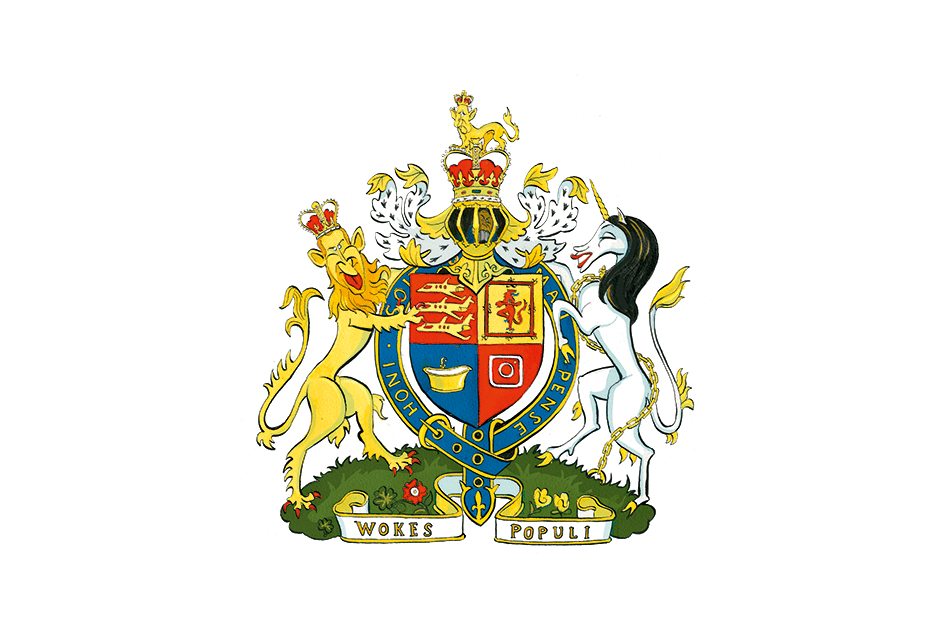It was a big call, sending the royals out and about straight after the Oprah interview. We have to be seen to be believed, as Her Majesty is said to have once observed. It’s a philosophy more complicated than it appears and one which should have the Sussexes worried.
As a strategy, it’s not risk-free. Within 24 hours of ITV’s broadcast of the Meghan and Harry interview, Charles went to a vaccination centre in North London. A couple of days later, William was at an East End school. It’s amazing how rarely these things go wrong. True: appearances aren’t widely trailed in advance, armed officers are at hand, and to a great extent crowds police themselves. Even so, it just takes a moron with a brass neck and a grudge to make trouble. A slap, a mouthful of spittle, a foul-mouthed slogan. Whatever the stunt, smartphones would guarantee global notoriety for the perpetrator.
In a digital world, does it make sense for the royals to keep on pressing the flesh? Not solely because of the risks, but because the publicity gains are seemingly so slight. I remember putting that question to a senior courtier a few years ago in a cosy bar overlooking Green Park. Our positions were the reverse of what you might expect. He felt the monarchy ought to be concentrating less on tree-planting ceremonies and more on mass media messaging. I felt then, and feel even more strongly in light of recent events, that the Court Circular is the monarchy’s secret weapon.
On the one and only occasion I talked to the Queen, I noticed what everyone I imagine takes in when they meet her for the first time
My logic is straightforward. According to a YouGov study in 2017, over the long decades of her reign our monarch has either physically met or been seen by a third of her subjects. For many of them the encounter is indelible, unsettling even. Stories abound of hard-nosed trades union officials or foreign potentates bent on grandstanding who find themselves so discombobulated that they curtsey when they should be bowing. And anyone who has met Her Majesty tells a similar story of being, if not wrong-footed, then at least a trifle star-struck.
On the one and only occasion I talked to the Queen, at a reception in South Africa, I noticed what everyone I imagine takes in when they meet her for the first time; her height and her eyes. Our Queen is tiny, and her eyes have an amazing lambent blue glow about them. Of course, not all the 20 million or so Britons who have seen the sovereign in person will have personally faced that most necessary if platitudinous of regal ice-breakers: ‘And, what do you do?’. But just because they don’t get close enough to hand her a bouquet, doesn’t mean they leave unimpressed. And having seen her, what do they do next? They tell their family and their friends and their work colleagues and the lady at the check out at Sainsbury’s. That 20 million undergoes a compounding effect because, when you meet the world’s most famous woman, you want to share the experience.
It’s a memory of a lifetime for us; for her it’s just another day at the office. But simply because it’s routine, doesn’t mean it’s easy. As a royal correspondent for a couple of years, I watched the effort it takes to work a room well, to move along a line of rictus grins without looking bored. To tolerate the obsequious with as much equanimity as the interesting. Prince Charles, who attended 521 public engagements in 2019 (even more than the tireless Princess Royal’s 506) is especially good at this. A friend fondly recalls the Prince of Wales’ knack of remembering his soldiers’ names years after his last regimental inspection as their Colonel-in-Chief.
To a certain mindset, this is so much quotidian drudgery. I can’t imagine it appealed much to the Duchess of Sussex. If you’re a former actress in a hurry, there’s not much in the way of ratings to be had from the opening of East Dorsetshire’s Agricultural Show. The Sussexes may have abandoned social media, but the media hasn’t abandoned them. Whether it’s the Oprah interview, or the Netflix deal, they’ve sub-contracted out the bit in the royal rulebook about being seen in person to be believed. They want to tell stories, not hear them. Better one interview with the Queen of American TV, than dozens of functions with another Lord Lieutenant. Why have a brief encounter with hundreds, when a two-hour love-in reaches millions worldwide?
But this, to my mind, is myopic. And if there’s one thing the monarchy should be, it’s far-sighted. Like those other unelected institutions, the Vatican and Chinese Communist Party, it can think in terms of decades, even centuries.
Media is fragmenting (ITV viewing figures for the Oprah interview were half those once achieved by Coronation Street). Monarchy – in the flesh – has a different kind of reach. Incremental not ephemeral.
Ironically, Covid has meant the realm has been starved of real royals lately. The Queen on Zoom or a webinar with the Cambridges is all well and good. But nobody watches Prince William on the evening news and rings up a relative to talk up the merits of a constitutional monarchy. The Windsor walkabout may look dated and dull, but compared to the Sussex wokeabout, it’s an idea of stupefying brilliance.






Comments